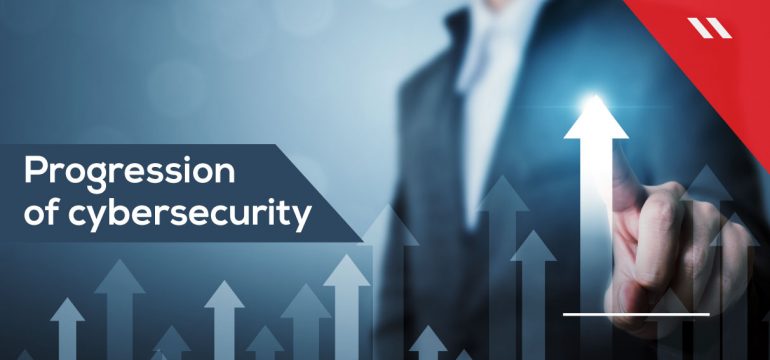The evolution of cybersecurity is both, fascinating and intriguing. Today’s cybersecurity professionals have immense responsibility and burden compared to yesteryears – they have to tackle with a wide range of cyberthreats such as malware, insider attacks & Distributed Denial of Service (DDoS).
In an era of complex and sophisticated cyber threats, it can be difficult to gauge and keep a track of where it all started from?
However, it can also be rewarding. The past, present and future of cybersecurity is a fascinating story and once that story is analyzed, one can predict where things will go in the future.
The first virus and the first worm
Way back in the 1970s and the 1980s, computers were a new and exciting form of technology. They were also highly specialized which meant not everybody had access to them. The early computers were located in prestigious universities or large government offices.
From a cybersecurity perspective, back then, the greatest danger was a data breach of confidential information, this data being read by people who were not supposed to read it, subsequently leaking this information to malicious sources.
The first virus was created by Bob Thomas in the 1970s on the ARPANET (the predecessor to the Internet) as a self-replicating program to infect computers. Typically this virus displayed a message on computer screens that read, “I’m the creeper, catch me if you can”.
This led to the creation of the first antivirus software by Ray Tomlinson, the inventor of e-mail. Aptly named as ‘Reaper’, he created a software program which specifically looked for the Creeper virus and deleted it from infected computer systems.
Later on, American Computer Scientist, Robert Morris created a fatal malware called as the ‘Morris Worm’. By attempting to gauge the size of the then-Internet, he created a worm malware which would propagate across networks, infiltrate Unix systems through bugs and self-replicate itself.
The Internet slowed down substantially due to this, with Robert Morris even being arrested under the Computer Fraud and Abuse Act.
The world was slowly and gradually waking up to the dangers of cyber threats.
The emergence of cyber threats
From the 1990s onwards, the Internet grew in volume and significance and as a result, the spectrum of cyber threats became even more pronounced. The world started understanding the consequences of data theft, especially after the case of Markus Hess, a German citizen, who, along with two others, hacked into military computers in the US, Europe and East Asia and sold confidential information to Soviet Russia.
Through the 1990s, Internet usage increased and more browsers started coming into existence, allowing more people to access the World Wide Web. This created a whole new industry of cyber threats with malicious individuals understanding the value of the huge amount of data that was being created. More antivirus solutions started to come into existence with the message that cybersecurity was important.
At the same time, threats started developing and evolving – new worms and malware started coming into existence, and vulnerabilities in different software also started to come into the light.
WannaCry and data breaches
Now, in the more recent past, few organizations need convincing that cyberattacks are real and hazardous. The WannaCry ransomware that infected more than 200,000 systems in more than 150 countries, the NoPetya ransomware attack that wiped data from energy firms and government systems or the Equifax and Yahoo data breaches which affected users into the billions have reflected the dangerous threats that the world is facing due to cyberattacks.
Cyber threats continue to evolve at an alarming rate with the proliferation of technology.
We are stepping into a new era of digital mobility where the Internet of Things (IoT) promises to connect the world around us. Powered by an evolving 5G technology, this reflects a world where products, services and users are connected more than ever in an ecosystem of convenience.
While this would be immensely beneficial for the user, the impact of cyberattacks becomes deadly – imagine hackers connecting into a smart car and changing its settings or attacking power grids connected to the Internet.
Change, however, cannot be impeded and it is only natural that technology will advance. With this advancement, cybersecurity solutions must also progress and stay ahead of the trend to ensure they protect users and enterprises from the next unknown threats.





No Comments